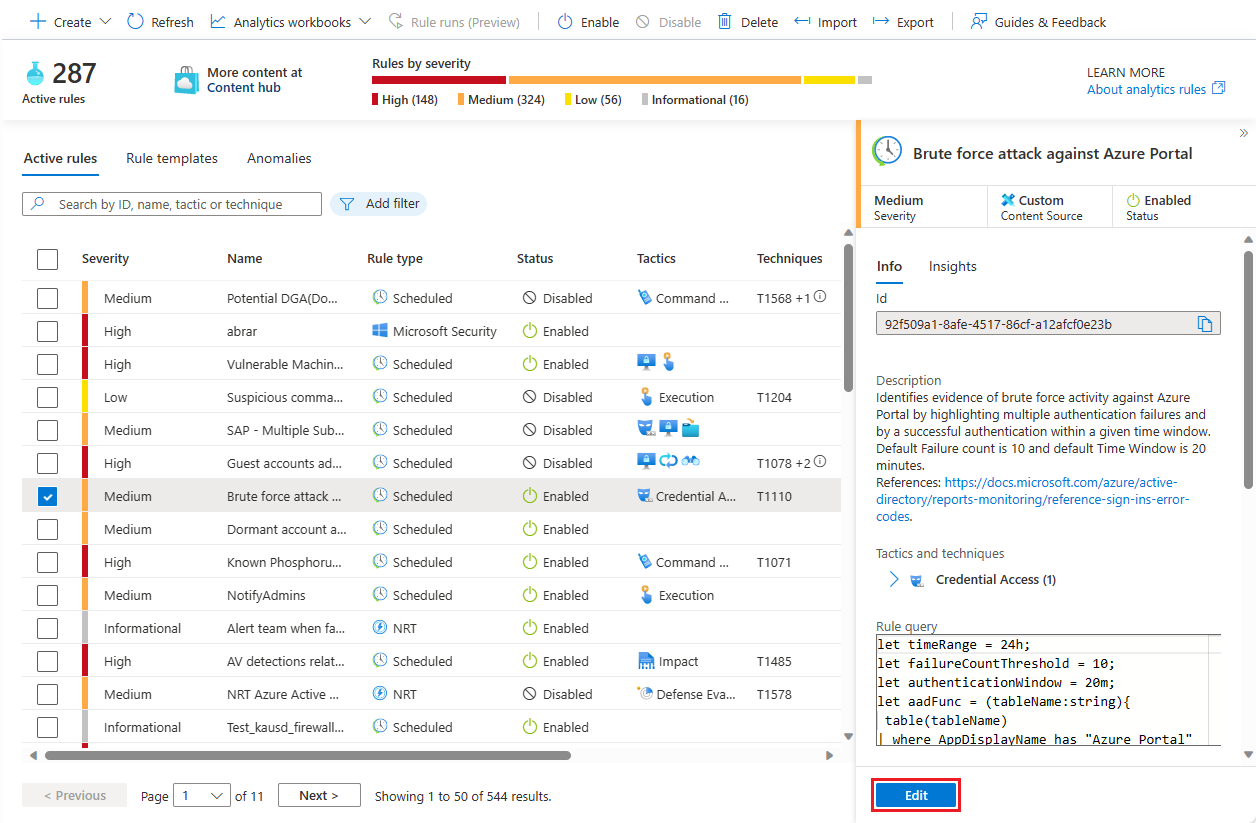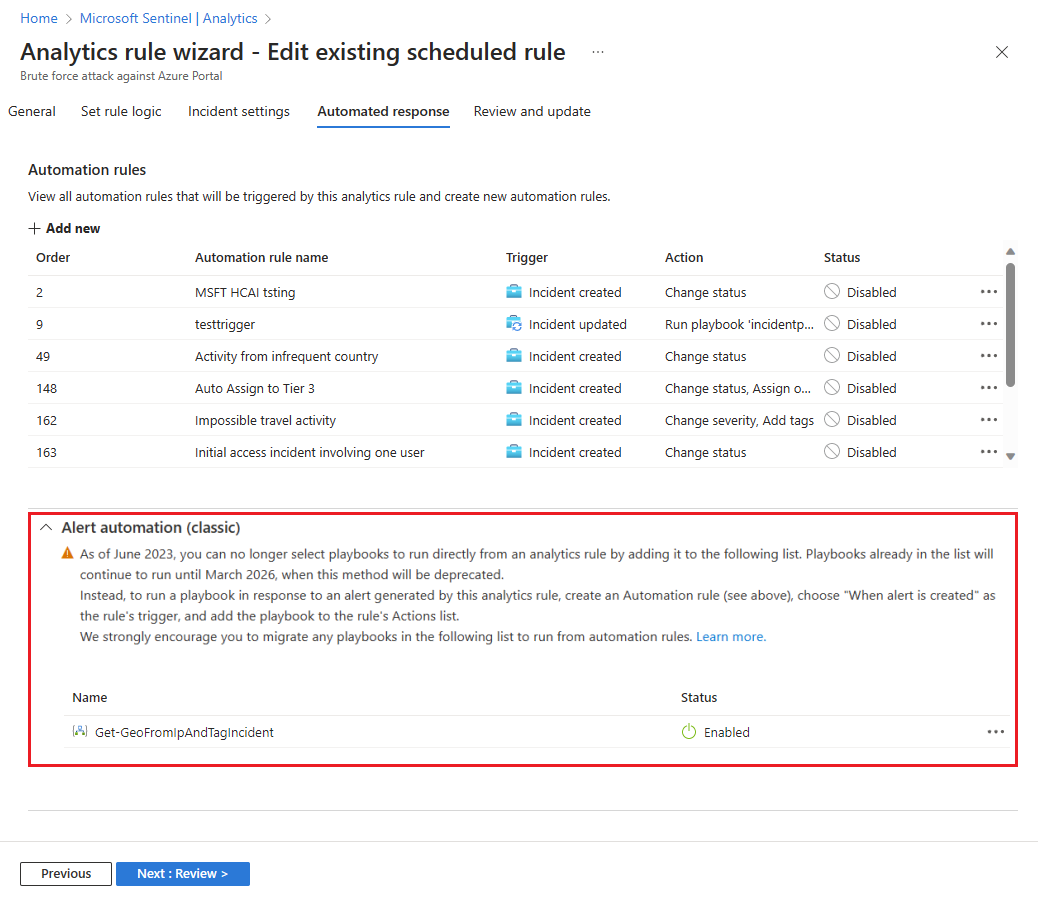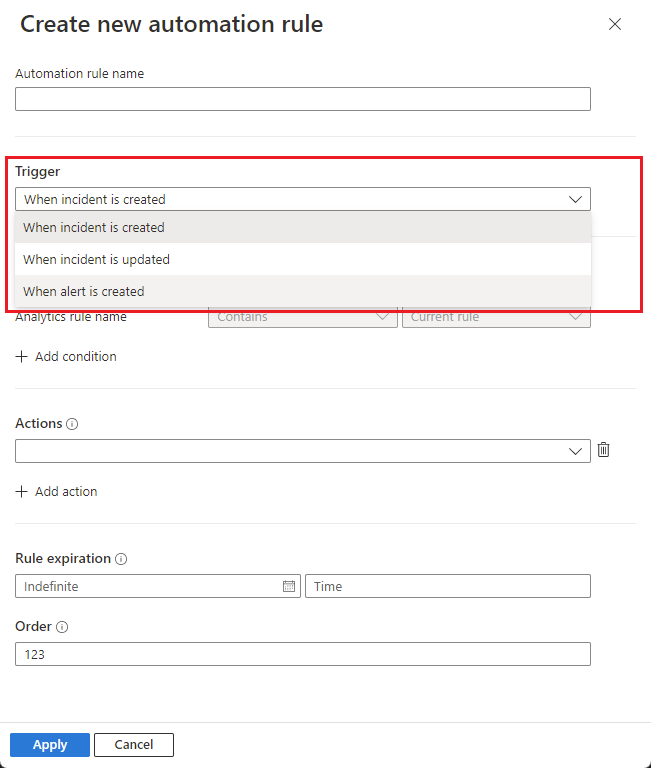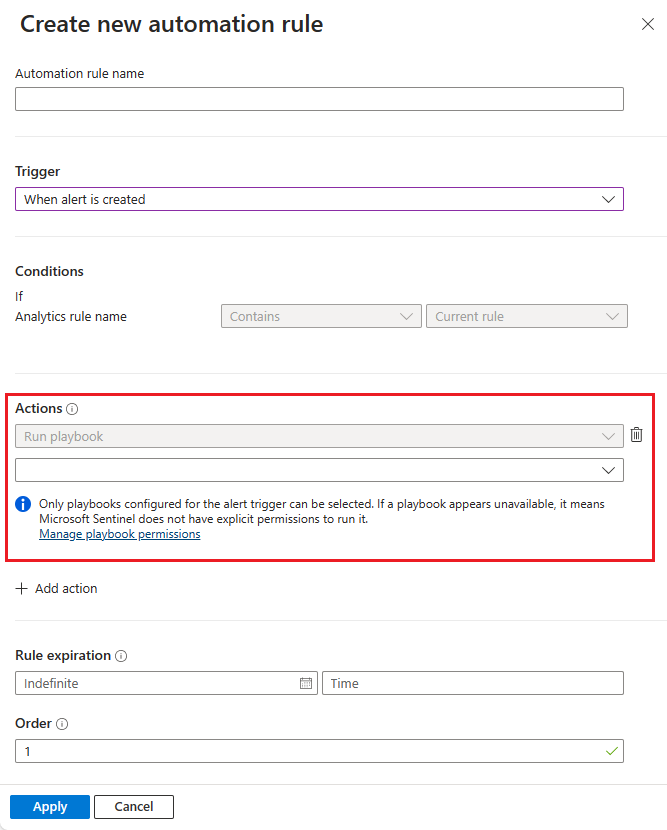Note
Access to this page requires authorization. You can try signing in or changing directories.
Access to this page requires authorization. You can try changing directories.
Important
Attention: All Microsoft Sentinel features will be officially retired in Azure in China regions on August 18, 2026 per the announcement posted by 21Vianet.
We recommend that you migrate existing playbooks built on alert triggers and migrate them from being invoked by analytics rules to being invoked by automation rules. This article explains why we recommend this action, and how to migrate your playbooks.
If you're migrating a playbook that's used by only one analytics rule, follow the instructions under Create an automation rule from an analytics rule.
If you're migrating a playbook that's used by multiple analytics rules, follow the instructions under Create a new automation rule from the Automation page.
Why migrate
Playbooks that are invoked by automation rules instead of analytics rules have the following advantages:
Automation management from a single display, regardless of type ("single pane of glass").
Use a single automation rule triggering playbooks for multiple analytics rules, instead of configuring each analytics rule separately.
Define the order in which alert playbooks are to be executed.
Support for scenarios that set an expiration date for running a playbook.
Migrating your playbook trigger doesn't change the playbook at all, and only changes the mechanism that invokes the playbook to run changes.
The ability to invoke playbooks from analytics rules will be deprecated effective March 2026. Until then, playbooks already defined as from analytics rules will continue to run, but as of June 2023 you can no longer add playbooks to the list of those invoked from analytics rules. The only remaining option is to invoke them from automation rules.
Prerequisites
You'll need the:
Logic Apps Contributor role to create and edit playbooks
Microsoft Sentinel Contributor role to attach a playbook to an automation rule
For more information, see Microsoft Sentinel playbook prerequisites.
Create an automation rule from an analytics rule
Use this procedure if you're migrating a playbook that's used by only one analytics rule. Otherwise, use Create a new automation rule from the Automation page.
In the Azure portal, select the Configuration > Analytics page.
Under Active rules, find an analytics rule already configured to run a playbook, and select Edit.

Select the Automated response tab. Playbooks directly configured to run from this analytics rule can be found under Alert automation (classic). Notice the warning about deprecation.

In the upper half of the screen, select + Add new under Automation rules to create a new automation rule.
In the Create new automation rule panel, under Trigger, select When alert is created.

Under Actions, see that the Run playbook action, being the only type of action available, is automatically selected and grayed out. Select your playbook from those available in the drop-down list in the line below.

Select Apply. The new rule shows in the automation rules grid.
Remove the playbook from the Alert automation (classic) section.
Review and update the analytics rule to save your changes.
Create a new automation rule from the Automation page
Use this procedure if you're migrating a playbook that's used by multiple analytics rules. Otherwise, use Create an automation rule from an analytics rule
In the Azure portal, select the Configuration > Automation page.
From the top menu bar, select Create -> Automation rule.
In the Create new automation rule panel, in the Trigger drop-down, select When alert is created.
Under Conditions, select the analytics rules you want to run a particular playbook or a set of playbooks on.
Under Actions, for each playbook you want this rule to invoke, select + Add action. The Run playbook action is automatically selected and grayed out.
Select from the list of available playbooks in the drop-down list in the line below. Order the actions according to the order in which you want the playbooks to run by selecting the up/down arrows next to each action.
Select Apply to save the automation rule.
Edit the analytics rule or rules that invoked these playbooks (the rules you specified under Conditions), removing the playbook from the Alert automation (classic) section of the Automated response tab.
Related content
For more information, see: